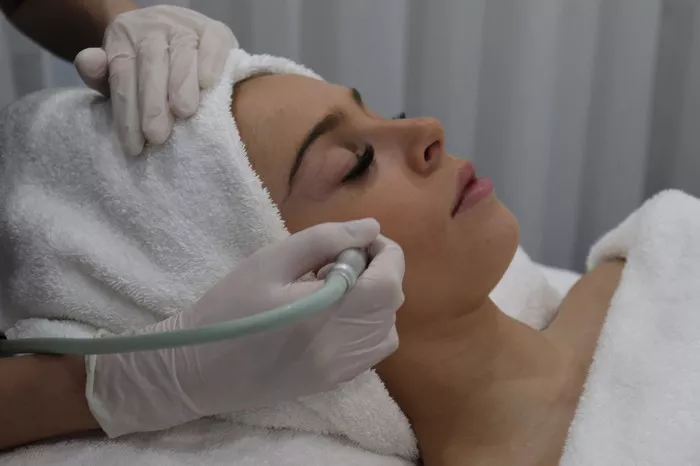Microdermabrasion is a popular non-invasive skincare treatment that offers numerous benefits, including exfoliating the skin, improving texture, and reducing the appearance of fine lines and blemishes. While it is generally considered a safe procedure, concerns about potential scarring may arise. In this article, we will explore the world of microdermabrasion, its benefits, how it works, and whether it can cause scarring.
Understanding Microdermabrasion
Microdermabrasion is a cosmetic procedure that involves the mechanical exfoliation of the topmost layer of the skin, known as the stratum corneum. It is typically performed using a handheld device that sprays or propels tiny crystals (crystal microdermabrasion) or uses a diamond-tipped wand (diamond microdermabrasion) to gently remove the outer layer of dead skin cells.
How Does Microdermabrasion Work?
Microdermabrasion works by creating controlled micro-injuries in the skin’s outer layer, prompting the body’s natural healing process. The procedure offers several benefits, including:
Exfoliation: Microdermabrasion effectively removes dead skin cells, revealing smoother and brighter skin underneath.
Collagen Stimulation: The micro-injuries stimulate collagen production, which can improve skin elasticity and firmness.
Reduced Fine Lines: Over time, microdermabrasion can reduce the appearance of fine lines and wrinkles.
Enhanced Absorption: By removing the outer layer of skin, skincare products can penetrate more deeply, increasing their effectiveness.
Acne and Scar Reduction: Microdermabrasion can help improve the appearance of acne scars and certain types of hyperpigmentation.
Can Microdermabrasion Cause Scarring?
Microdermabrasion is generally considered a low-risk procedure with minimal side effects. However, the potential for scarring primarily depends on several key factors:
Technician’s Skill: The expertise of the technician performing the procedure is crucial. A trained and experienced professional is less likely to cause complications or scarring.
Skin Type and Sensitivity: Individuals with very sensitive or easily irritated skin may be more prone to adverse reactions, including scarring.
Pre-existing Skin Conditions: People with pre-existing skin conditions, such as severe acne or rosacea, may have a higher risk of adverse reactions or scarring.
Aggressive Treatment: An overly aggressive microdermabrasion treatment, particularly with deeper exfoliation, can increase the risk of irritation, redness, and potentially scarring.
Failure to Follow Post-Procedure Instructions: Proper aftercare is essential to minimize the risk of complications. Failure to follow post-procedure instructions, such as avoiding sun exposure and using recommended skincare products, can lead to issues.
It’s important to note that the risk of scarring with microdermabrasion is relatively low when the procedure is performed by a qualified professional using appropriate techniques and equipment.
Preventing Scarring with Microdermabrasion
To reduce the risk of scarring when undergoing microdermabrasion, consider the following precautions:
Choose a Skilled Technician: Select a reputable and experienced skincare professional or dermatologist to perform the procedure.
Inform Your Technician: Be sure to inform your technician about any pre-existing skin conditions, sensitivities, or concerns you may have.
Follow Post-Procedure Care: Adhere to all post-procedure care instructions provided by your technician. This may include avoiding sun exposure, using sunscreen, and applying recommended skincare products.
Avoid Overuse: Overuse of microdermabrasion can increase the risk of irritation and potential scarring. Follow the recommended treatment schedule.
Be Patient: It’s important to understand that results may take time to become noticeable. Avoid the temptation to seek more aggressive treatments too soon.
Conclusion
Microdermabrasion is a widely accepted skincare procedure known for its exfoliating and rejuvenating effects. While it is generally considered safe and low-risk, concerns about scarring can arise. The likelihood of scarring primarily depends on factors such as the technician’s skill, skin type, and adherence to post-procedure care. When performed by a trained professional and with proper precautions, the risk of scarring with microdermabrasion is minimal. To ensure the best outcome and minimize the risk of complications, it is advisable to consult with a qualified skincare professional or dermatologist who can assess your individual skin needs and provide appropriate guidance throughout the process.


